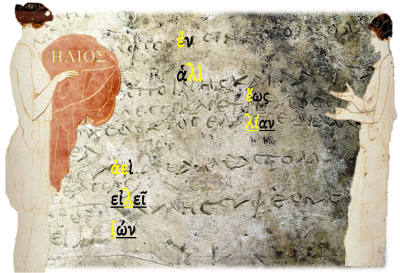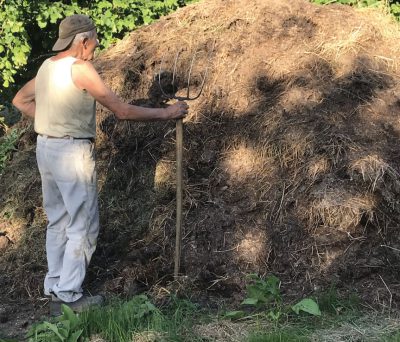Programme
Depuis la crise du Darfour, l’insurrection de Boko Haram et l’embrasement de la Centrafrique, le bassin du lac Tchad focalise l’attention des médias et des pouvoirs publics. Les insécurités, le thème choisi pour le XVIIe colloque du réseau Méga-Tchad, apparaît, plus que jamais, d’une actualité que l’on ne peut éluder. Au-delà d’alimenter les bruits de gazette, les insécurités sont un élément structurant des organisations sociales, facteurs de blocages et moteurs de changements des hommes, de leurs cultures, de leurs organisations et de leurs productions. Les tragiques événements que traverse la région du lac Tchad rappellent la capacité destructrice des violences, mais ne doivent pas faire oublier les adaptations, les résiliences, voire les innovations déployées pour y faire face, les contourner et les dépasser.
Dans un espace géographique marqué par des insécurités chroniques, mais dans lequel les armes et les arts de la guerre, les encadrements spatiaux et politiques, les vecteurs de communication et les modes de résolution des conflits ont changé, les violences armées actuelles comportent une profondeur historique. L’histoire du bassin du lac Tchad semble marquée du sceau de la grande violence, tant l’usage intense de la force est transversal à toutes les périodes historiques, des esclavages et des royaumes précoloniaux aux Etats indépendants et aux rébellions, en passant par les colonisations et les guerres mondiales. Dans les périodes de relative accalmie, les insécurités endémiques n’ont jamais cessé d’être, entretenues par les embuscades rurales de bandes de pillards (« voleurs de bétail », « coupeurs de route »), la criminalité urbaine et des autoritarismes politiques se servant des corps habillés, à la fois garants de la stabilité et facteurs d’instabilité.
Les insécurités transforment les organisations sociales en s’insérant dans leur quotidienneté. Face à la prolifération de la violence les groupes sociaux adaptent leurs manières de gouverner et de produire, d’habiter et de circuler, d’échanger et de communiquer. Au-delà des faits d’armes, les insécurités, comme inquiétudes provoquées par l’éventualité d’un danger, renvoient à l’ensemble des risques auxquels sont confrontées les personnes dans leur vie ordinaire, notamment les imprévisibilités productives, les incertitudes foncières, les conflits locaux et les violences de proximité (famille, école, genre, justice, etc.). Doivent être approfondis les liens entre ces insécurités mêlant des vulnérabilités et des aléas divers dans leur intensité, leurs échelles et leurs temporalités.
Les encadrements sociaux se recomposent dans les insécurités. La compréhension du fonctionnement des Etats demeure centrale dans les conflits armés, le plus souvent internes et qui tendent à se régionaliser, interrogeant les limites intérieures et les politiques extérieures des organisations politiques centralisées. L’importance des rhétoriques et des actions extrémistes placent la religion comme le second grand enjeu des insécurités actuelles et passées. La lutte pour le contrôle des ressources par des réseaux, des bandes, des leaders ethno-régionaux et des autorités centrales informent et transforment aussi les encadrements sociaux. La fabrique des institutions internationales et des arènes politiques locales constituent d’autres niveaux d’interprétation des insécurités.
Attention : pour y assister votre inscription est obligatoire via cette adresse : olivier.langlois@cepam.cnrs.fr
Insecurities in the Lake Chad basin
Ever since the crisis in Darfur, the Boko Haram insurrection and the conflagration in the Central African Republic, the Lake Chad basin has been a focus of media and government attention. Insecurities, the theme chosen for this 17th Mega-Chad colloquium, has become a topic that can no longer be avoided. Beyond media attention, insecurities play a major part in structuring social organizations. They either block or force change at the level of individuals, their cultures, their organizations and their productions. The tragic events that have played out in the region demonstrate the destructive potential of violence, and yet we should not forget that these events also stimulate adaptations, resilience and resistance that can lead to innovations and new ways of coping with such situations, and to new means of facing, circumventing or overcoming them.
In a geographic area characterized by chronic insecurity over the long term, weapons and the arts of war, political arenas, means of communication and ways of solving conflicts have changed over time. Outbreaks of insecurity in the present are deeply rooted in the past. The history of the Lake Chad basin is marked by tremendous violence, an intense use of force pervading all periods of history, from the early times of precolonial kingdoms and widespread slavery, through colonization and world wars, and on to later independent states and rebellions against them. Even in relatively quiet periods, endemic insecurity never ended but took various forms: ambushes in rural areas carried out by bands of pillagers (rustlers and highwaymen), urban crime, and the crimes of authoritarianism, mediated by uniformed “forces of order” that play a dual role as guarantors of stability and generators of political instability.
Insecurities transform social organizations by imposing themselves on everyday life. Faced with the proliferation of violence, social groups modify their forms of self-government and production, of dwelling and traveling, of exchange and communication. Beyond actual acts of violence, insecurities (in the form of anxieties provoked by the likelihood of danger) contribute to the sum of risks confronting people in their daily lives, and notably unpredictabilities in production, uncertainties regarding property, local conflicts and more proximate violence (within the family, at school, gender conflicts, law and order, etc.). Research is needed on the links between these insecurities that fuse vulnerabilities and hazards of different types and intensities, scales and durations.
Insecurities also lead to the reconstitution of political structures. Understanding of the functioning of states remains central to the study of armed conflicts, which tending to begin as internal conflicts often take on a regional dimension, challenging the internal workings and external politics of centralized political organizations. The significance of rhetorics and extremist actions make religion the second key factor in present and past insecurities. The struggle for the control of resources by networks, bands, regional or ethnic leaders, and central authorities also sheds light on social frameworks and their transformations. The fabric of international institutions and of local political arenas offers further possibilities for research on insecurities.
Rencontres scientifiques à venir
Consulter toutes les rencontresConference | Peripatetic Ethics in Theophrastus and After
Project Theophrastus
Appel à communication et à posters | Les datations « absolues » en archéologie
8e séminaire scientifique et technique de l’Inrap
Call for Papers | Ancient and Medieval Greek Etymology as heuristic and pedagogic tool. The case of common words
4th Etygram Conference, April 28-29-30, 2025
44e Rencontres Internationales d’Archéologie et d’Histoire | Fumier, bouses et guano : ordures ou or brun ?
Statut, usage et gestion des déjections animales depuis la Préhistoire ; potentiel archéologique et paléoenvironnemental – 44èmes Rencontres Internationales d’Archéologie et d’Histoire de Nice Côte d’Azur.
Conférence publique | Une Approche Anthropologique du fumier. Un artefact pas comme les autres
à 20h par Sophie LALIGANT, Anthropologue. Professeure des Universités, Université de Tours dans le cadre des 44e RENCONTRES INTERNATIONALES D’ARCHÉOLOGIE ET D’HISTOIRE DE NICE CÔTE D'AZUR
Colloque Zoomathia | « Il ne leur manque que la parole » : Sons, cris et voix des animaux dans les cultures antiques et médiévales
Colloque international du réseau international de recherche ZOOMATHIA







